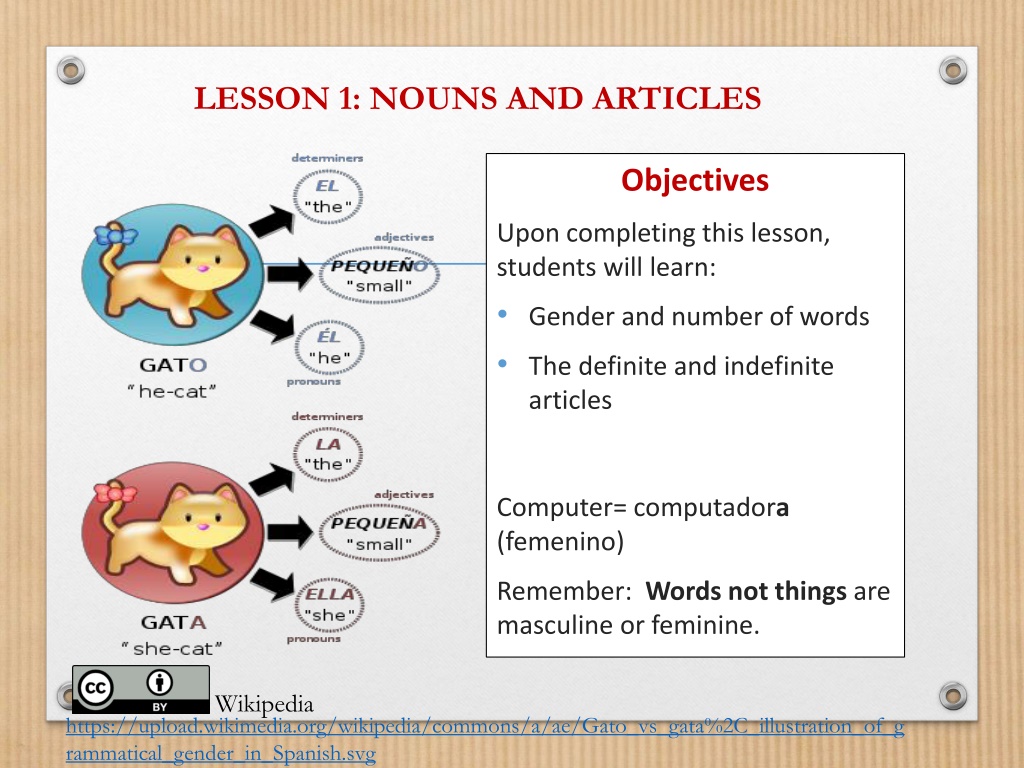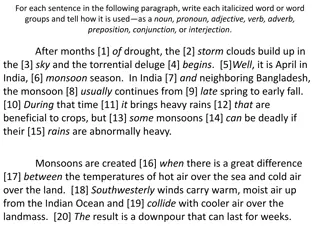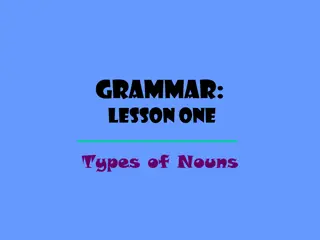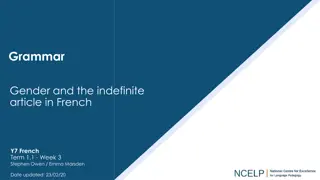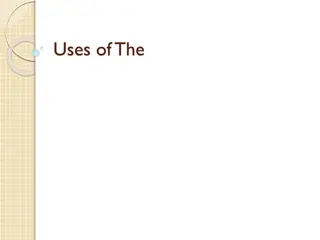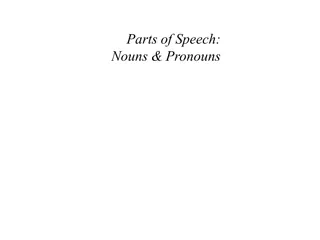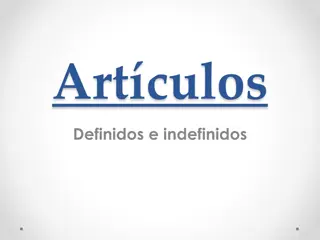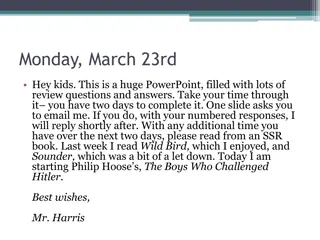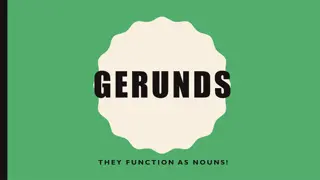Basics of Spanish Nouns and Articles
This lesson introduces the fundamental concepts of gender, number, and articles in the Spanish language. Students will learn about the gender and number of words, definite and indefinite articles, as well as rules for forming the feminine of nouns. The chapter covers the usage of definite articles in Spanish, exceptions to forming feminine nouns, and provides examples of masculine and feminine words. Additionally, the overview challenges students to guess the meanings of Spanish words and apply the definite article.
Uploaded on Sep 19, 2024 | 0 Views
Download Presentation

Please find below an Image/Link to download the presentation.
The content on the website is provided AS IS for your information and personal use only. It may not be sold, licensed, or shared on other websites without obtaining consent from the author. Download presentation by click this link. If you encounter any issues during the download, it is possible that the publisher has removed the file from their server.
E N D
Presentation Transcript
LESSON 1: NOUNS AND ARTICLES Objectives Upon completing this lesson, students will learn: Gender and number of words The definite and indefinite articles Computer= computadora (femenino) Remember: Words not things are masculine or feminine. Wikipedia https://upload.wikimedia.org/wikipedia/commons/a/ae/Gato_vs_gata%2C_illustration_of_g rammatical_gender_in_Spanish.svg
OVERVIEW This chapter covers one of the most basic and important concepts in the Spanish language: the idea of number (singular, plural) and gender (masculine, femenine). The rules you are going to learn apply not only to people but also to things and places. The definite article in English is THE. It covers all cases. In Spanish, however, there is a definite article for: masculine, singular noun: EL (Example: EL se or) masculine, plural: LOS (Los se ores) feminine, singular: LA (La se orita), feminine, plural: LAS (LAS se oritas
Usually, to form the feminine of a noun you add A to the final consonant or change the final vowel for A: Le n/ leona mexicano/ mexicana However, there are several exceptions that you will learn further in the course. The masculine LOS is used with a set that includes any combination of masculine and feminine nouns: los estudiantes, los profesores.
OVERVIEW Nouns ending in -I N are usually feminine (lecci n, conversaci n). Words ending in -AD are also feminine: nacionalidad, verdad (truth), amistad (friendship) Words ending in consonant are usually masculine, however there are exceptions (see above) The following words are then masculine Pared (wall) rbol (tree) reloj (watch, clock) L piz (penci) Amor (love) papel (paper)
OVERVIEW In the United States, it is almost impossible not to have been exposed to the Spanish language. Try the following as an exercise : Without looking at the English equivalent, try to guess the meaning of the following words: Amigo coche l piz silla Libro sombrero cabeza su ter Se or patio mesa madre Universidad mano ciudad mujer Adulto toro pueblo hombre Now, read again the previous slides and add the definitive article to the words above. Answers
TheIndefinite article, a, an in English, is: Un (singular, masculine), Una (singular feminine) Unos, unas (some) plural, masculine and feminine Un libro/ Una silla/ Unos libros/ Unas sillas The formation of plural: Plural of words ending in vowel= +S: casa/casas; hombre/hombres Plural of words ending in consonant= +ES. nacionalidad/nacionalidades mujer/mujeres
Amigo (friend) Elcoche (car) El l piz (pencil) El silla (Chair) La libro (Book) El sombrero (Hat) El cabeza (Head) La su ter (Sweater) El se or (Gentleman) El patio (Yard, patio) El mesa (Table) La madre (Mother) La universidad (University, College)La mano (The exception to the rule) La ciudad (City) La mujer (Woman) La adulto (Male adult) El toro (Bull) El pueblo (Town) El hombre (Man) El Roger Celis
